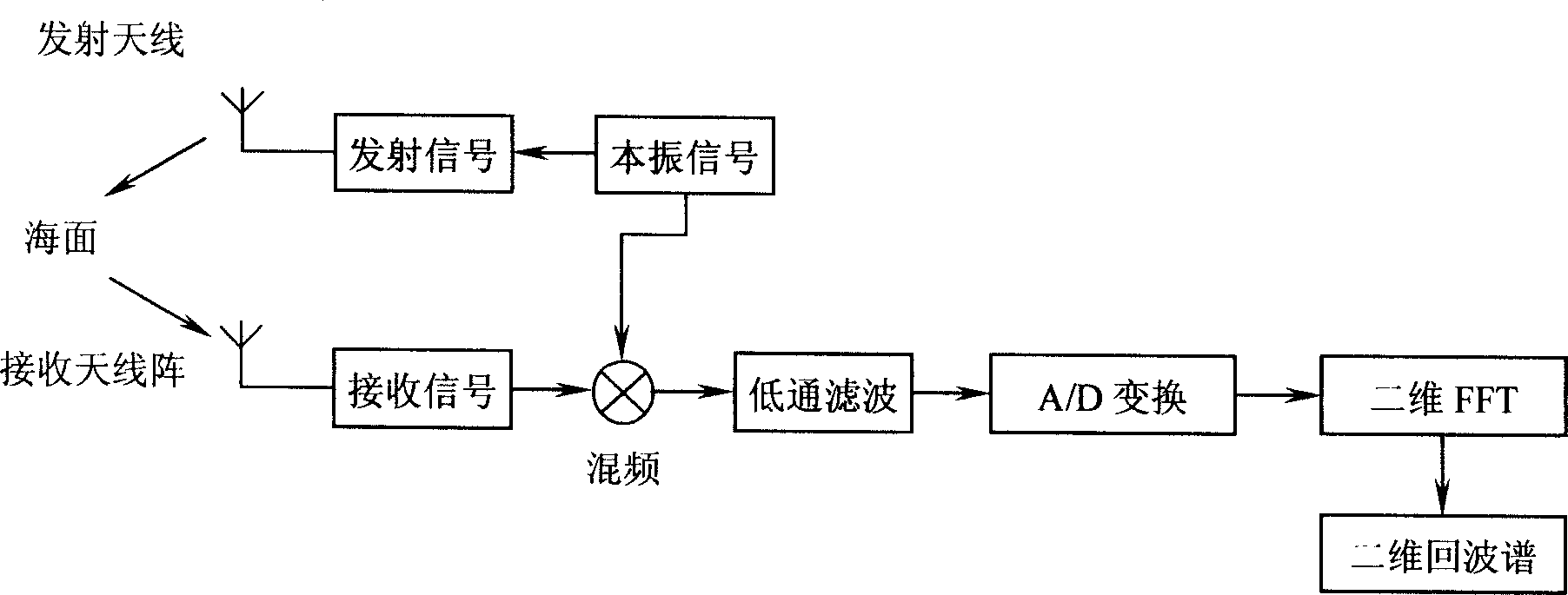Near-field calibrating method for high frequency surface wave radar uniform straight line array receiving channel
A uniform straight line, near-field technology, applied in the direction of radio wave reflection/re-radiation, radio wave measurement system, instrument, etc., can solve the problem that the phase error of the receiving channel has a great influence on the high-resolution algorithm, the estimation and calibration are difficult, and the channel corrects the phase Unbelievable estimated values and other problems, to achieve the effects of reducing development costs and maintenance costs, good accuracy and robustness, and meeting real-time requirements
- Summary
- Abstract
- Description
- Claims
- Application Information
AI Technical Summary
Problems solved by technology
Method used
Image
Examples
Embodiment Construction
[0028] The present invention will be described in more detail below in conjunction with the accompanying drawings and embodiments.
[0029] The key point of the present invention is to transform the channel correction problem into a parameter estimation problem by establishing a single-azimuth echo signal model received by a uniform linear array, and thereby obtain a relatively accurate channel mismatch estimation.
[0030] As shown in Figure 3, after the radiation signal of the transmitting antenna is scattered by the sea surface, the sea surface echo and the near-field auxiliary source signal enter the receiver, and the distance can be obtained by frequency mixing, low-pass filtering, A / D conversion and two-dimensional FFT - Doppler (velocity) two-dimensional echo spectrum. In the two-dimensional echo spectrum, a large number of ocean echoes received by the radar are separated according to distance and velocity, and scattered on many spectral points. When the coherent accum...
PUM
 Login to View More
Login to View More Abstract
Description
Claims
Application Information
 Login to View More
Login to View More - R&D
- Intellectual Property
- Life Sciences
- Materials
- Tech Scout
- Unparalleled Data Quality
- Higher Quality Content
- 60% Fewer Hallucinations
Browse by: Latest US Patents, China's latest patents, Technical Efficacy Thesaurus, Application Domain, Technology Topic, Popular Technical Reports.
© 2025 PatSnap. All rights reserved.Legal|Privacy policy|Modern Slavery Act Transparency Statement|Sitemap|About US| Contact US: help@patsnap.com



